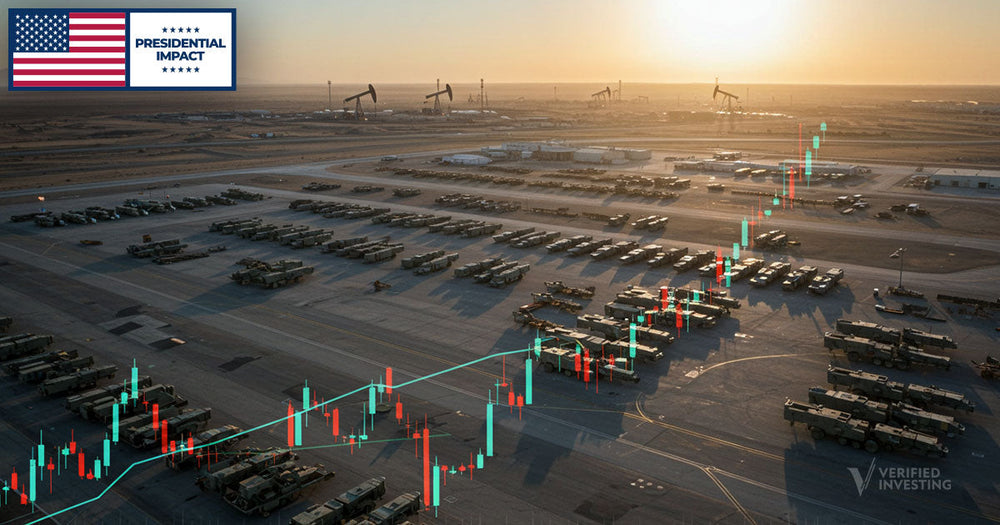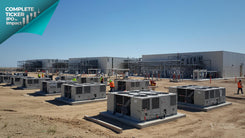George W. Bush: Navigating 9/11, Tax Cuts, and the Road to the 2008 Meltdown

Prologue: A Contested Election and a Dot-Com Hangover
It’s January 20, 2001. The country’s capital is chilly, and the inauguration crowd buzzes with anticipation. George Walker Bush, the 43rd President of the United States, steps onto the dais following a fiercely disputed election that hinged on razor-thin margins and ballot controversies in Florida. Meanwhile, in Silicon Valley and across the financial world, the once-soaring dot-com bubble has begun to burst, wiping out trillions in market capitalization. The NASDAQ Composite—a darling index in Bill Clinton’s late-1990s boom—has already plunged by over 50% from its 2000 peak.
Bush projects a folksy confidence, promising to restore morale and unite a politically divided nation. Wall Street wonders: Will this new president have what it takes to navigate the post-dot-com slump? How will his pledged tax cuts influence a market reeling from lost tech fortunes? Unbeknownst to all, an even larger crisis—rooted in a terrorist attack that will strike the heart of America—looms just months away, changing the Bush presidency and the stock market’s trajectory forever.
This article delves into the complexities of Bush’s economic stewardship, from immediate confrontations with the fallout of dot-com mania, through the catastrophic events of September 11, two costly wars, landmark tax cuts, and ultimately the unfolding of the housing bubble that would collapse late in his second term, giving way to the 2008 financial crisis. In short, it’s a story of multiple market cycles compressed into eight tumultuous years—replete with lessons about war-time spending, the power (and peril) of unregulated credit expansions, and how swiftly the stock market can shift under extraordinary events.
1. Inheriting the Dot-Com Crash
1.1 The Tail-End of the Tech Bust
When Bush took office in early 2001, the exuberance of the late 1990s dot-com boom had crashed into a harsh reality. Internet startups with questionable revenue models had imploded, erasing investor wealth at a shocking pace. Over 5 trillion dollars in market value vanished from U.S. equities between March 2000 and October 2002. Major bellwether stocks like Cisco, Intel, and Amazon hemorrhaged market cap.
The Federal Reserve, chaired by Alan Greenspan, had begun cutting interest rates aggressively in 2001 to cushion the collapsing tech sector. While unemployment was still relatively low, the direction was ominous—job cuts in tech soared, consumer confidence wobbled, and the S&P 500 trended downward. Bush, who had promised wide-ranging tax relief, saw an opening: a tax cut might re-spark consumption and investment. Critics countered that the government surpluses built under Bill Clinton might evaporate under big tax breaks.
1.2 Early Tax Cut Proposals
Within months, Bush signed the Economic Growth and Tax Relief Reconciliation Act of 2001 (EGTRRA), slashing marginal tax rates and offering rebates. For the stock market, these cuts offered a short-term psychological boost: more disposable income, an impetus for corporate earnings to recover, and a general pro-business vibe from the new administration. Some sectors, like consumer discretionary, welcomed the tax relief as a jolt to spending. Meanwhile, critics warned of renewed deficits if growth didn’t rebound fast enough to offset lost revenue.
Though the tech meltdown wasn’t over, some investors took heart in a White House championing private sector solutions and a Fed pumping liquidity. Then the unthinkable happened: September 11, 2001.
2. The Market Impact of 9/11
2.1 The Day the Markets Stopped
On the morning of September 11, 2001, hijacked airplanes struck the World Trade Center’s Twin Towers and the Pentagon, killing thousands and shaking the nation to its core. The New York Stock Exchange (NYSE) and NASDAQ never opened that day. Trading halted entirely, and financial markets remained closed until September 17—the longest shutdown since the 1930s. The harrowing images of lower Manhattan under assault overshadowed everything.
When markets reopened, it was devastation: the Dow Jones Industrial Average plunged over 600 points (about 7%) in one day, and eventually lost more than 14% in the ensuing weeks. Airlines, travel, and insurance stocks bore the brunt, while defense and security firms found reluctant gains amid expectations of a major war on terror. Confidence—already shaky from the dot-com fiasco—plummeted further. For the Bush administration, the top priority shifted overnight from economic mending to national security and counterterrorism measures.
2.2 Rapid Federal Response
Bush, flanked by Federal Reserve and Treasury officials, pledged swift action to stabilize markets. The Fed cut rates further, aiming to ensure liquidity. Congress rushed to pass airline bailouts and the Patriot Act, which, among other provisions, tightened financial regulations to track terrorist financing. The market gradually stabilized, aided by a wave of patriotism and consumer resilience.
The hallmark result: the stock market overcame the immediate terror shock within months. By early 2002, the S&P had recouped some losses, though the underlying economy remained fragile, flirting with recession. Yet the rally was short-lived, overshadowed by corporate scandals like Enron, intensifying war rhetoric, and a deepening slump in certain sectors.
3. Markets and the Afghanistan and Iraq Wars

3.1 War on Terror’s Market Implications
Following 9/11, Bush launched the War on Terror, first targeting Al-Qaeda in Afghanistan. By 2002–2003, the administration focused on Iraq, alleging weapons of mass destruction. Defense contractors soared on expectations of massive military contracts. Companies like Lockheed Martin, Northrop Grumman, and Halliburton saw share price boosts. Oil markets also became volatile, with disruptions tied to Middle East tensions.
For the broader stock market: War-time spending can stimulate certain segments (defense, logistics), but fear of protracted conflict can undermine investor optimism. The dual effect was a modest rally in select defense stocks but a drag on consumer sentiment as oil prices rose and geopolitical uncertainty loomed.
3.2 The Impact of Rising Deficits
Simultaneously, Bush’s war efforts, combined with tax cuts, ballooned federal deficits. Surpluses that lingered from Clinton’s final years quickly dissipated. Many economists debated whether heavy defense outlays plus decreased revenue spurred by tax relief could hamper long-term growth. However, in the short term, there was little sign that deficits alone drove stocks downward. Instead, markets fixated on immediate events—oil price swings, war progress, and the ongoing corporate scandal revelations (like WorldCom).
By 2004, with Bush up for re-election, the narrative was that the economy needed continued “pro-growth policies” (tax breaks and relaxed regulations) to offset war costs. Voters largely agreed, re-electing him, though the market remained choppy amid global headwinds and lingering war frustrations.
4. Tax Cuts and the Mid-2000s Stock Rally
4.1 Jobs and Growth Tax Relief Reconciliation Act (JGTRRA)
In 2003, Bush doubled down on the idea that further tax relief could jolt the economy out of its post-bubble malaise. The JGTRRA slashed taxes on dividends and capital gains, aiming to stimulate corporate investment and reward shareholders. Immediately, dividend-paying stocks, such as utilities and consumer staples, surged on the promise of higher after-tax yields. Meanwhile, capital gains cuts enticed more risk-taking in equities, fueling a mid-decade bull run from 2003–2007.
Market Response: Investors welcomed the pro-shareholder tilt. Dividend aristocrats soared. Hedge funds and retail players took advantage of capital gains breaks, rotating capital more freely among growth stocks. Some critics again warned that deficits would mount, but the near-term effect was an equity upswing.
4.2 The “Great Moderation” Delusion
Around 2004–2006, mainstream economists crowed about a “Great Moderation”—the notion that advanced economies like the U.S. had tamed violent business cycles, thanks to improved monetary policy, flexible markets, and technology. Bush officials trumpeted the success of the second round of tax cuts, claiming low unemployment and stable inflation validated their approach. Indeed, the S&P 500 marched upwards, interest rates stayed moderate, and consumer confidence rose.
Yet behind the scenes, a new bubble was brewing in the housing sector—fueled by easy credit, lax lending standards, and exotic financial instruments. While this incipient crisis wasn’t entirely of Bush’s making, his administration’s preference for light-touch regulation arguably contributed to an environment where subprime lending flourished with minimal oversight.
5. The Rise of the Housing Bubble
5.1 Subprime Mortgages and Securitization
In the early 2000s, homeownership soared as lenders offered subprime mortgages to borrowers with dubious credit. This spree was underpinned by **mortgage-backed securities (MBS)**—bundles of home loans sold to investors worldwide. The Fed’s low interest rates post-2001 and the administration’s push for an “ownership society” aided this. Everyone, from local banks to Wall Street giants, chased mortgage origination profits.
Stock investors saw financial shares rocket upward—banks like Countrywide, investment houses like Lehman Brothers, and insurers jumped on the gravy train of mortgage securitization. Housing prices soared, fueling a wealth effect that spurred consumer spending. The administration championed the idea that expanded credit access was beneficial—if more Americans could own homes, it must be good, right?
5.2 Regulatory Gaps
Despite warnings from some quarters about predatory lending and bubble-like price gains, the administration largely maintained a hands-off stance. The Office of Thrift Supervision and other agencies did little to clamp down on risky loans or ensure strict underwriting. For the stock market, financial sector shares soared, boosting the broader indices. By mid-decade, it seemed unstoppable. Re-elected in 2004, Bush claimed a mandate to continue pro-growth policies, ignoring bubble alarms from certain analysts who believed real estate mania was unsustainable.
6. The Burst of the Housing Bubble: 2007–2008

6.1 Early Ripples in Subprime Mortgages
In 2007, rising interest rates and resetting adjustable-rate mortgages triggered mass defaults among subprime borrowers. Mortgage lenders like New Century Financial collapsed. Fear infected the credit markets. Initially, many on Wall Street believed the meltdown was “contained” to subprime. But as mortgage-backed securities spread across banks and hedge funds globally, it became apparent this was a systemic risk.
The stock market wobbled in late 2007. Financial institutions wrote down billions in toxic mortgages. Government-sponsored entities like Fannie Mae and Freddie Mac faltered under the weight of precarious loan portfolios. Bush’s administration took modest steps, urging voluntary loan modifications, but refrained from large-scale interventions initially.
6.2 Lehman Brothers and the 2008 Meltdown
By September 2008, the crisis escalated beyond control. Lehman Brothers declared bankruptcy, unleashing a global panic. Credit froze, the Dow Jones Industrial Average tanked, and banks teetered on the edge of collapse. Treasury Secretary Henry Paulson (a Bush appointee) and Federal Reserve Chairman Ben Bernanke scrambled for rescue measures, culminating in the $700 billion TARP (Troubled Asset Relief Program). The meltdown overshadowed the final months of Bush’s presidency, overshadowing any achievements from earlier in the decade.
In essence, the seeds planted under a low-regulation, easy-credit environment blossomed into a near-cataclysmic meltdown. The housing bubble’s burst deflated stock valuations across the board. By early 2009, the S&P 500 was down over 50% from its 2007 peak, marking the worst collapse since the Great Depression. President-elect Barack Obama inherited the wreckage.
7. Evaluating Bush’s Market Legacy
7.1 The Post-9/11 Recovery vs. the 2008 Crash
Bush’s presidency featured two distinct market arcs:
- 2003–2007 Upswing: Fueled by tax cuts, easy credit, low Fed rates, a housing boom, and robust corporate profits—particularly in real estate, construction, and financials.
- 2008 Collapse: The meltdown triggered by subprime defaults, culminating in the global financial crisis.
The irony is that while Bush oversaw a moderate bull run post-dot-com, he concluded with the worst financial crisis in decades. Some defenders note that global factors (e.g., European banks’ own subprime exposures) exacerbated the meltdown, and that the administration eventually responded with TARP. Critics say the White House’s laissez-faire stance on mortgage markets and “mission accomplished” mindset for homeownership contributed heavily to the fiasco.
7.2 War Spending and the Deficit
Another dimension is the cost of wars in Afghanistan and Iraq, coupled with tax cuts. While short-term market confidence might have been buoyed by defense outlays, deficits soared, reversing the Clinton-era surplus. The massive borrowing arguably gave the U.S. less fiscal room to respond aggressively to the 2008 meltdown, though TARP still represented an unprecedented bailout scale.
8. How Bush Compares to Previous Presidents
- Clinton reigned over a bullish 1990s expansion that ended in the dot-com crash; Bush inherited the aftermath and faced an even more crippling meltdown in 2008.
- Reagan championed supply-side tax cuts too, but avoided a total financial meltdown; Bush’s tax cuts seemed to set a similar tone, but combined with subprime mania, it ultimately contributed to the worst crisis since the Great Depression.
- FDR dealt with crisis by unleashing government intervention. Bush, confronted by the 2008 crisis, eventually embraced partial bailouts, but only as a last resort, marking a stark policy shift from his earlier limited-regulation stance.
9. Takeaways for Investors
-
Prolonged Low Rates and Loose Regulation
Bush’s tenure exemplifies how easily markets can overheat under conditions of cheap credit and minimal oversight. Real estate speculation soared, and once the bubble popped, the impact spilled into every corner of finance. -
War and Market Sentiment
Post-9/11, defense stocks soared, while broader markets overcame short-term shock thanks to robust liquidity injections. Over time, deficits from war spending weigh on government budgets and can create further macro vulnerabilities. -
Tax Cuts’ Dual Effects
Bush’s 2001 and 2003 tax cuts provided short-run stimuli, arguably lifting equities. But if not accompanied by spending restraint, deficits can balloon, sowing seeds for future instability. -
Global Contagion
The meltdown in 2008 proved that in a hyperlinked financial system, local bubbles (subprime) can become global crises. A president’s stance on regulation or bailouts can mean the difference between a contained event and a world-shaking recession.
10. Conclusion: The Bush Paradox—Bull Runs and Bailouts
On January 20, 2009, George W. Bush stepped down amidst an unfolding financial crisis of epic proportions. His presidency started with a mild recession and the shock of 9/11, overcame that to deliver a mid-decade rally, only to end with the economy in free fall. The housing bubble’s seeds, planted under easy credit, minimal regulatory checks, and Bush’s endorsement of broad homeownership, blossomed into a near collapse of the global banking system.
Yet it’s too simplistic to brand Bush’s entire market impact as negative. Many Americans benefited from the early 2000s post-9/11 rebound, and some corporate expansions thrived under the administration’s pro-business posture. The complexities lie in the interplay of unforeseen terror attacks, war spending, mortgage mania, and the structural flaws in global finance. When forced by crisis, the administration partnered with the Fed to pass TARP, arguably avoiding an even deeper depression—but leaving the next president, Barack Obama, to manage the aftermath.
As we approach the final chapters of this series, we pivot to Barack Obama, confronted by the wreckage of 2008 and charged with leading the post-crisis recovery. By studying Bush’s complexities—how fleeting bull markets can vanish under insufficiently regulated bubbles—investors gain a deeper sense of caution. In finance, expansions can conceal lurking vulnerabilities, and a single event—be it war, terror, or subprime meltdown—can unravel years of gains in mere weeks or months.
Trading involves substantial risk. All content is for educational purposes only and should not be considered financial advice or recommendations to buy or sell any asset. Read full terms of service.




